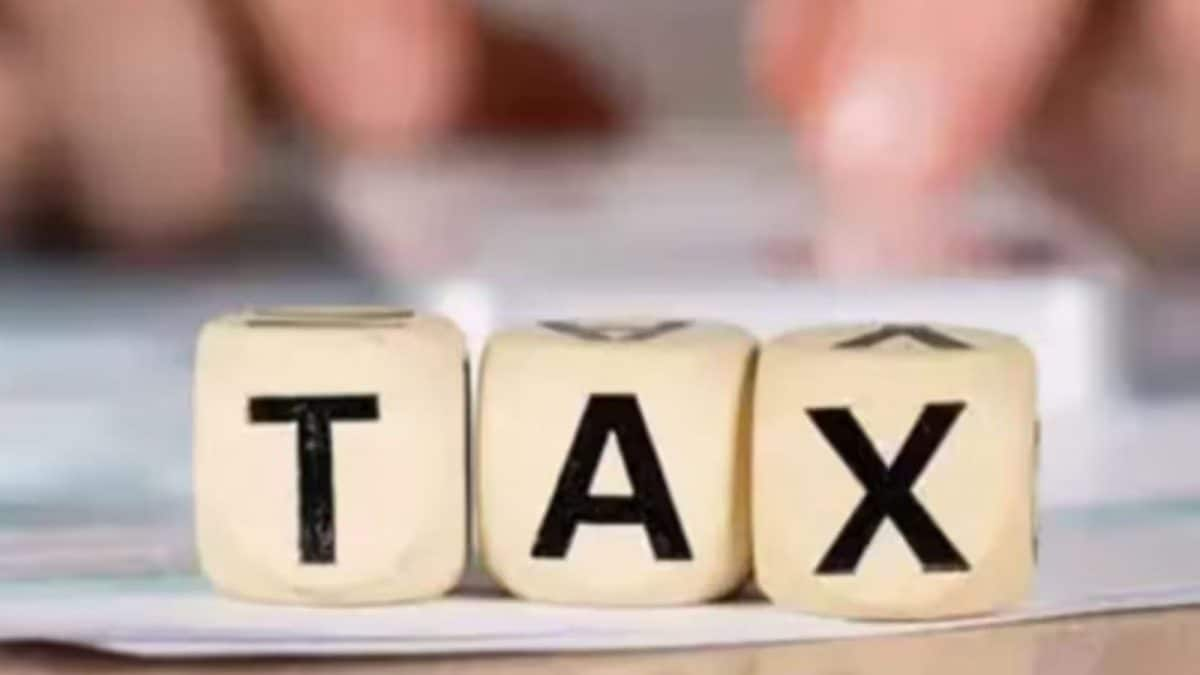Business
Income Tax Act 2025 Gets President’s Assent: Centre Notifies New Rules To Replace 1961 Law

Last Updated:
The new Act removes redundant provisions and archaic language and cuts the number of Sections from 819 in the Income Tax Act, 1961, to 536 and the number of chapters from 47 to 23.

Income Tax Act, 2025.
The central government on Friday notified the Income Tax Act, 2025, in the Official Gazette. It comes a day after the President gave assent to the Act on Thursday. The Act, which will come into effect from April 1, 2026, consolidates and amends the existing Income Tax Act, 1961.
“The Income-tax Act, 2025 has received the Hon’ble President’s assent on 21st Aug 2025. A landmark reform replacing the 1961 Act, it ushers in a simpler, transparent & compliance-friendly direct tax regime. Access the official document here: https://egazette.gov.in/(S(p0hzyo3qrxli3juyloktgdrv))/ViewPDF.aspx,” Income Tax India said in a post on X on August 22.
The Act was passed by Parliament in the just-concluded monsoon session.
The Income-tax Act, 2025 has received the Hon’ble President’s assent on 21st Aug 2025.A landmark reform replacing the 1961 Act, it ushers in a simpler, transparent & compliance-friendly direct tax regime.
Access the official document here: https://t.co/wOPk1PFQbP pic.twitter.com/Xw84hzpPb3
— Income Tax India (@IncomeTaxIndia) August 22, 2025
The new Act removes redundant provisions and archaic language and reduces the number of Sections from 819 in the Income Tax Act of 1961 to 536 and the number of chapters from 47 to 23. The number of words had been reduced from 5.12 lakh to 2.6 lakh in the new Income Tax Bill, and for the first time, it introduces 39 new tables and 40 new formulas, replacing the dense text of the 1961 law to enhance clarity.
As the new law will come into force from April 1, 2026, the computer systems of the Income Tax department are required to be rebooted to operationalise the new legislation.
The new Income Tax Bill was drafted within a record time of six months and introduced in the Budget session in February 2025. It was referred to the Select Committee for a comprehensive study of the Bill. Subsequently, in order to incorporate the suggestions made by the Committee, the Bill (No.1) was withdrawn and a fresh Bill (No.2) was introduced in the monsoon session of Parliament.
While presenting the revised Bill in Lok Sabha on August 11, Finance Minister Nirmala Sitharaman said the government had accepted “almost all of the recommendations of the Select Committee”, along with suggestions from stakeholders to ensure the law’s intent is “conveyed more accurately”.
“There are corrections in the nature of drafting, alignment of phrases, consequential changes and cross-referencing. Therefore, a decision has been taken by the government to withdraw the Income Tax Bill, 2025, as reported by the Select Committee. Consequently, Income-tax (No. 2) Bill, 2025, has been prepared to replace the Income-tax Act, 1961,” according to the statement of objects and reasons.
Key Changes Proposed By The Committee
Tax refunds
Removal of the provision that denied income-tax refunds if returns were filed after the due date.
The withdrawn version required taxpayers to file ITRs within the due date to claim a refund (Section 433). The revised Bill ensures refunds can still be claimed even if the ITR is filed late.
Inter-corporate dividends
Restoration of Section 80M deduction (Clause 148) for inter-corporate dividends for companies availing the special tax rate under Section 115BAA.
This provision had been missed in the earlier draft.
Nil TDS certificate
Taxpayers will be allowed to avail of Nil TDS certificates, enabling no tax deduction at source under certain conditions.
Exemption on anonymous donations
Anonymous donations to purely religious trusts will be exempt from tax. The exemption will not apply to trusts that are both religious and engaged in social services such as running hospitals or schools.
Digital-first tax process
The new Bill aims to make the tax process more digital, automated, and faceless, to enhance convenience and minimise the scope for corruption.
Clarification on capital gains tax rumours
Reports last month suggested that the new Bill might change capital gains tax rates. The Income Tax Department denied this in a post on X, stating that the Bill’s objective is language simplification and removal of redundant or obsolete provisions, not altering tax rates.

Haris is Deputy News Editor (Business) at news18.com. He writes on various issues related to personal finance, markets, economy and companies. Having over a decade of experience in financial journalism, Haris h…Read More
Haris is Deputy News Editor (Business) at news18.com. He writes on various issues related to personal finance, markets, economy and companies. Having over a decade of experience in financial journalism, Haris h… Read More
Read More
Business
Peel Hunt cheers ‘positive steps’ in Budget to boost London market and investing

UK investment bank Peel Hunt has given some support to under-pressure Chancellor Rachel Reeves over last week’s Budget as it said efforts to boost the London market and invest in UK companies were “positive steps”.
Peel Hunt welcomed moves announced in the Budget, such as the stamp duty exemption for shares bought in newly listed firms on the London market and changes to Isa investing.
It comes as Ms Reeves has been forced to defend herself against claims she misled voters by talking up the scale of the fiscal challenge in the run-up to last week’s Budget, in which she announced £26 billion worth of tax rises.
Peel Hunt said: “Following a prolonged period of pre-Budget speculation, businesses and investors now have greater clarity from which they can start to plan.
“The key measures were generally well received by markets, particularly the creation of additional headroom against the Chancellor’s fiscal rules.
“Initiatives such as a stamp duty holiday on initial public offerings (IPOs) and adjustments to the Isa framework are intended to support UK capital markets and encourage investment in British companies.
“These developments, alongside the Entrepreneurship in the UK paper published simultaneously, represent positive steps toward enhancing the UK’s attractiveness for growth businesses and long-term investors.”
Ms Reeves last week announced a three-year stamp duty holiday on shares bought in new UK flotations as part of a raft of measures to boost investment in UK shares.
She also unveiled a change to the individual savings account (Isa) limit that lowers the cash element to £12,000 with the remaining £8,000 now redirected into stocks and shares.
But the Chancellor also revealed an unexpected increase in dividend tax, rising by 2% for basic and higher rate taxpayers next year, which experts have warned “undermines the drive to increase investing in Britain”.
Peel Hunt said the London IPO market had begun to revive in the autumn, although listings activity remained low during its first half to the end of September.
Firms that have listed in London over recent months include The Beauty Tech Group, small business lender Shawbrook and tinned tuna firm Princes.
Peel Hunt added that deal activity had “continued at pace” throughout its first half, with 60 transactions announced across the market during that time and 10 active bids for FTSE 350 companies, as at the end of September.
Half-year results for Peel Hunt showed pre-tax profits jumped to £11.5 million in the six months to September 30, up from £1.2 million a year earlier, as revenues lifted 38.3%.
Peel Hunt said its workforce has been cut by nearly 10% since the end of March under an ongoing savings drive, with full-year underlying fixed costs down by around £5 million.
Steven Fine, chief executive of Peel Hunt, said: “The second half has started strongly, with the group continuing to play leading roles across both mergers and acquisitions and equity capital markets mandates.”
Business
Gross GST collections for November stand at over Rs 1.70 lakh crore; up 0.7 per cent – The Times of India

GST collections: The Gross Goods and Services Tax (GST) collections for the month of November came in at over Rs 1.70 lakh crore. This is a rise of 0.7%, according to official data.SBI Research in a report in November had estimated that the gross domestic GST collections may come around Rs 1.49 lakh crore for November 25 (returns of October 25 but filed in Nov’25), a YoY growth of 6.8%.“Coupled with Rs 51,000 crore of IGST and cess on Import, the November GST collections thus could cross Rs 2.0 lakh crore, driven by the peak festive season demand led by lower GST rate and increased compliance while most of states experience positive gains,” SBI Research had said.This story is being updated
Business
Key Financial Deadlines That Have Been Extended For December 2025; Know The Last Date

New Delhi: Several crucial deadlines have been extended in December 2025, including ITR for tax audit cases, ITR filing and PAN and Aadhaar linking. These deadlines will be crucial in ensuring that your financial affairs operate smoothly in the months ahead.
Here is a quick rundown of the important deadlines for December to help you stay compliant and avoid last-minute hassles.
ITR deadline for tax audit cases
The Central Board of Direct Taxes has extended the due date of furnishing of return of income under sub-Section (1) of Section 139 of the Act for the Assessment Year 2025-26 which is October 31, 2025 in the case of assessees referred in clause (a) of Explanation 2 to sub-Section (1) of Section 139 of the Act, to December 10, 2025.
Belated ITR filing deadline
A belated ITR filing happens when an ITR is submitted after the original due date which is permitted by Section 139(4) of the Income Tax Act. Filing a belated return helps you meet your tax obligations, but it involves penalties. You can only file a belated return for FY 2024–25 until December 31, 2025. However, there will be a late fee and interest charged.
PAN and Aadhaar linking deadline
The Income Tax Department has extended the deadline to link their PAN with Aadhaar card to December 31, 2025 for anyone who acquired their PAN using an Aadhaar enrolment ID before October 1, 2024. If you miss this deadline your PAN will become inoperative which will have an impact on your banking transactions, income tax return filing and other financial investments.
-

 Sports1 week ago
Sports1 week agoWATCH: Ronaldo scores spectacular bicycle kick
-

 Entertainment1 week ago
Entertainment1 week agoWelcome to Derry’ episode 5 delivers shocking twist
-

 Politics1 week ago
Politics1 week agoWashington and Kyiv Stress Any Peace Deal Must Fully Respect Ukraine’s Sovereignty
-

 Business1 week ago
Business1 week agoKey economic data and trends that will shape Rachel Reeves’ Budget
-

 Tech6 days ago
Tech6 days agoWake Up—the Best Black Friday Mattress Sales Are Here
-

 Politics1 week ago
Politics1 week ago53,000 Sikhs vote in Ottawa Khalistan Referendum amid Carney-Modi trade talks scrutiny
-

 Fashion1 week ago
Fashion1 week agoCanada’s Lululemon unveils team Canada kit for Milano Cortina 2026
-

 Tech6 days ago
Tech6 days agoThe Alienware Aurora Gaming Desktop Punches Above Its Weight







